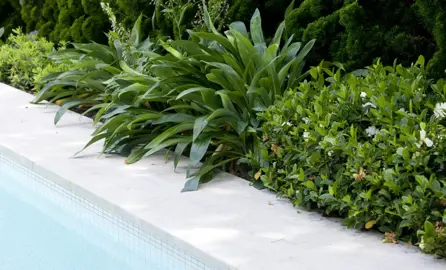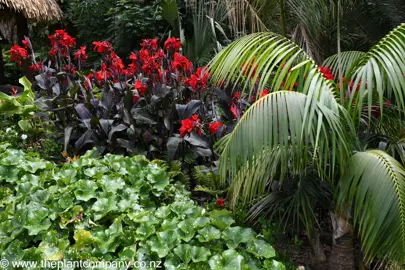How To Care For Ficus Tuffi
The most important part starts with planting and our article, How To Plant A Ficus Tuffy, provides sound advice on how to do this properly. So, let’s now assume your plant is growing well and you want to keep it that way!

Ficus Tuffi are beautiful, evergreen shrubs that are favoured for their glossy green foliage, dense growth habit, and great aesthetics. They are generally trouble free, easy to grow, and very rewarding. Follow our tips to get the most from your Ficus Tuffi in NZ!
Caring for Ficus Tuffi is about making sure the plants are thriving. Our plant care articles provide the necessary details to give you the greatest chance of success. Afterall, there is nothing worse than putting the effort into planting and establishing them, then they fail. Therefore, follow our advice for Ficus Tuffi care and give yourself the best chance of success.

The most important part starts with planting and our article, How To Plant A Ficus Tuffy, provides sound advice on how to do this properly. So, let’s now assume your plant is growing well and you want to keep it that way!
Winter is the perfect time for mulching and trimming your plants. Trimming can be aggressive or subtle as you like. Typically, plants are trimmed to contain growth and encourage fresh, new foliage. Ficus Tuffy will sprout away again no matter how hard they are cut back and provided the stem is healthy. Organic matter such as compost or sheep pellets should be spread liberally around the plants and then overlaid with a mulch during winter. The Plant Company has three very good options for mulch. The first is coco fibre matting which is made from the husks of coconuts. The second is Earth Mat which is made from recycled paper. Both of these break down to become part of the soil within two years. The third is black plastic matting which will last 20 years or more. Whichever mulch is used, The Plant Company recommend stones, bark chip, or other similar products be spread over top for aesthetic purposes. The Plant Company does not recommend adding fertiliser during winter as this is better applied in spring so less is wasted. However, adding organic matter such as compost is quite okay.
Spring is the perfect time for fertilising the plants as they start to bounce into life. The Plant Company has fertilisers which have been specially blended for different plants and in this instance, our shrub fertiliser will give them the correct boost and keep them fed for 12-months. A suitable alternative is our organic fertiliser which will also keep them well fed but they will require a secondary application in autumn.
Summer is when the plants need regular watering and this should be undertaken every second day on the hottest days. Plants that are establishing need particular attention as their root system will not have penetrated deep enough to secure consistent moisture yet.
Caring for Ficus Tuffy in autumn is about keeping the plants healthy. Foliar feeding using a liquid fertiliser can be undertaken during spring, summer, and autumn if you have time but this is not essential if solid fertiliser and/or good amounts of organic matter have already been applied. If you think the plants need an extra boost or have some yellowing, however, a liquid fertiliser won’t hurt.
Plants should be checked for pest or disease issues during spring, summer, and autumn. If anything is looking a little bit unusual, refer to our articles under Ficus Tuffy Issues And Troubleshooting.

Ficus Tuffi are lush plants and the foliage requires good soil moisture during dry periods to stay fresh and keep growing actively. The Plant Company recommends a generous watering every second day during summer, or every third day if the soil is a bit heavier. If the young stems start to droop, you need to water immediately. The Plant Company advises watering in the morning or in the evening for water conservation purposes. Please be sure to read the article, Ficus Tuffi Diseases, as over-watering can have unintended consequences!
Even though Ficus Tuffi are tolerant of dry periods they will still benefit from being watered. During those dry periods the plants will stop growing to preserve themselves. This is clearly not desirable if you are still wanting them to grow. They will start growing again once rain or water is provided.
Providing the best fertiliser for Ficus Tuffi is important to ensure the plants thrive. The correct fertiliser depends on whether the plant is grown in a pot or in soil, and getting this wrong can be disastrous for your plants. Our articles provide the best advice about fertiliser for Ficus Tuffi so you can achieve the amazing results you are after.
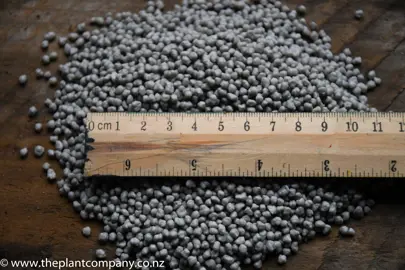
Ficus Tuffi grown in containers require different fertiliser to those grown outdoors in soil. In this instance the correct fertilisers to use are either the container plant fertiliser or fertiliser tablets. Each of these will provide safe, sustained, and complete nutrition to the plant for the next 12-months. Using other types of fertiliser can be detrimental to the plant and may result in plant injury or death.
Foliar feeding using a liquid fertiliser can be undertaken if you have time, but this is not essential if container plant fertiliser or fertiliser tablets have been used. If you think the plant needs an extra boost or has some yellowing, however, a liquid fertiliser application won’t hurt. A great benefit of foliar feeding is that it helps keep the leaves strong and lush as the nutrition is right where the plant needs it.
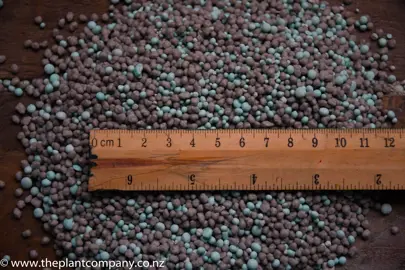
Ficus Tuffi are vigorous plants that require feeding to keep them growing optimally. The Plant Company’s shrub fertiliser has been blended to give plants an initial boost and then sustained nutrition for 12-months. We recommend the fertiliser is applied to the soil surface in spring just as the plants start to grow actively. More importantly, we advise that no fertiliser is placed in the hole at planting, but rather spread around the soil surface so it can wash through the roots as it releases. This fertiliser ensures that nutrients remain in the soil around the plant rather than being lost through the soil profile to where the plant cannot reach it. This also applies to plants grown on sandy soils. This shrub fertiliser is therefore very environmentally friendly and longer lasting than most other products in the market.
Foliar feeding using a liquid fertiliser can be undertaken if you have time but this is not essential if shrub fertiliser has been applied. If you think the plants need an extra boost or have some yellowing, however, a liquid fertiliser application won’t hurt. A great benefit of foliar feeding is that it helps keep the leaves strong and lush.
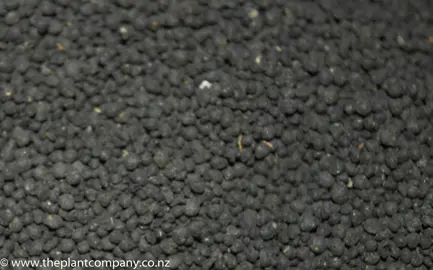
Ficus Tuffi are showy plants that require feeding to keep them looking amazing. A lot of articles have all sorts of advice on this subject which often requires multiple applications, so you use more of their fertiliser. The Plant Company prefers to take a simpler and more environmentally responsible approach. We believe the best organic option is The Plant Company’s organic fertiliser which is applied in spring and again in autumn and will keep them well fed. You can safely apply generous amounts of this fertiliser without risk of injuring the plants. More details about this organic fertiliser are provided with the product.

The soil pH refers to how acid of alkaline the soil is. Ficus Tuffi prefer a soil pH within the range of 6.2 to 7.5 which means they will tolerate both acidic and semi-alkaline soils. As the pH of the soil moves away from this optimum range, the nutrients the plant is taking up (or not taking up) through the roots changes. If the shift in pH is too far, this can result in deficiencies of some nutrients and toxic levels of others. In either case this can cause the plant to become sick or even die a slow death.
The best way to know whether the pH is correct for your plant is to do a test. The Plant Company has pH test kits available that are easy to use and only take a few minutes to get a result. Preferably this test should be completed before planting so any pH issues can be corrected without risking the plant. A pH less 6.2 should have sparing amounts of dolomite lime applied along with shrub fertiliser. A pH above 7.5 should have small amounts of soil acidifying fertiliser applied. In both instances the fertiliser should be thoroughly mixed into the soil before planting. A retest of the soil pH should be undertaken after four weeks, and small adjustments made again. If the pH is in the optimum range, just use shrub fertiliser thereafter.
This series of articles answers many of the frequently asked questions about Ficus Tuffi, such as how fast they grow, their hardiness, and more!
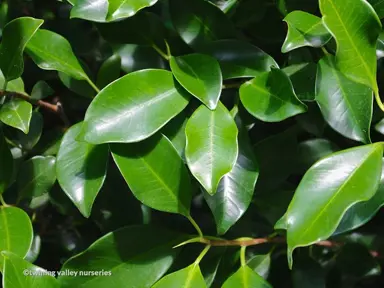
Ficus Tuffi are tolerant of moderate frost once established, though young trees should be protected until they are at least one metre tall. Frost Cloth is a good option for protecting vulnerable plants. Be careful to harden off recently purchased plants if you intend to plant these during winter and frosts are likely. Do this by gradually exposing them to the cooler conditions over a 3-4 week period or until such time as you think that a frost won’t damage them. The Plant Company recommends holding off planting until spring if you are at all worried that new plants might get frosted.
If plants do get frosted, they will generally recover. However, you will need to protect them from further frosts as this could kill them completely. Generally speaking, a good sized Ficus Tuffi planted in spring should have grown tall enough to cope with 4-5 medium frosts the following winter. They should not be grown in heavy frost areas.
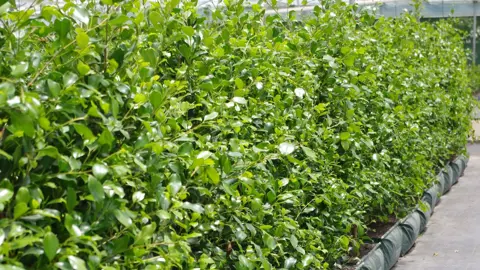
Ficus Tuffi are generally vigorous and establish quickly. Most will grow about 50-60 cm per year provided they are at least 30 cm tall when planted. Planting shorter plants will typically only give 30 cm of growth in the first year.
Ficus Tuffi are usually trimmed during winter when used for hedging with about 10-15% of the plant material cut off. A good pair of secateurs is all you need for this task.

Ficus Tuffy and Ficus Tuffi are the same plant. The only difference is the spelling. The correct name is Ficus ‘Tuffy’.

Ficus Tuffy generally grows to 3 m tall if they are neither trimmed nor contained (as might occur if planted in a pot). The Plant Company has put a lot of effort into determining how big each variety will grow in an unrestricted growing environment. Far too often we see people planting a garden too densely and then having to spend a lot of time trimming or removing plants later. This is something we want our customers to avoid and we therefore provide size information so the planning can be right from the start.
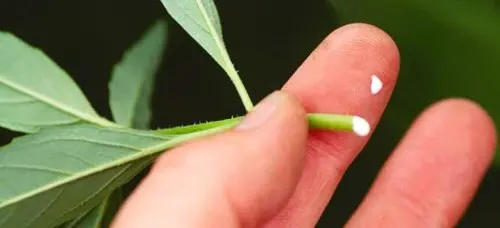
When leaves or stems of Ficus Tuffi are cut or removed, white sap will be exuded. This is normal and is the plants way of defending itself from things that want to eat it. Animals and insects generally find the sap unpleasant and therefore leave the plant alone.
The white sap of Ficus Tuffi is toxic and can lead to allergy and skin reactions. The Plant Company recommends gloves are worn while handling cut material and any contact areas are washed thoroughly. We have not come across any issues with this plant but we do err on the side of caution when handling it.
Ficus Tuffi do encounter problems from time to time, whether it be hedges or individual plants. Therefore, it is important to understand the underlying issue(s) and have the remedies to fix these. The Plant Company have produced this series of articles to help you in the quest for answers to address Ficus Tuffi problems and diseases.

The most common disease problem with Ficus Tuffi is root rot. Root rot attacks the roots and causes the plant to eventually die if not remedied. The tell-tale symptoms are yellowing of the leaves and defoliation. This can happen over several months during any season and progressively gets worse. The only real solution is to fix the drainage. If plants are being over-watered or they are exposed to prolonged wetness, they will suffer. Therefore, good drainage is essential and sites where drainage is poor should not be avoided for Ficus Tuffi.
Nutritional issues can occur from time to time if plants have not been fed for a number of years. This often shows up first as yellow foliage, which, over time results in dead areas on the leaf. A liquid fertiliser can be used to correct issues quickly and should be supported with shrub fertiliser during spring.
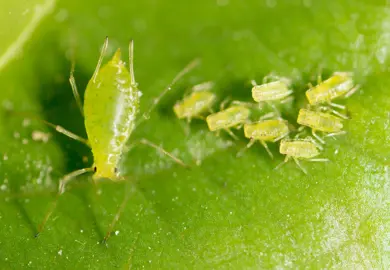
Ficus Tuffi do not suffer from pest issues as a general rule. We have seen the odd aphid on plants in the nursery but not at levels that would justify spraying them. That said, if pest levels are high and of concern, then a general insecticide can be used for their control. Please always read the label before using any agrichemical.
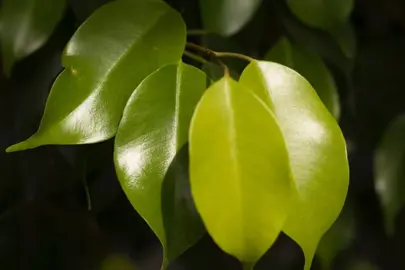
Leaf yellowing can result from disease (refer to the article Ficus Tuffi Diseases) as well as poor drainage and too much shade. A sign of poor drainage is often seen by the older leaves exhibiting yellowing and falling prematurely. If the internal leaves of the plant are yellowing, yet the outer leaves remain green, it is highly likely that they are being shaded by the outer leaves. Such yellowing in this instance is normal.
Occasionally, nutritional issues can occur if plants have not been fed for a number of years. This often shows up first as yellow foliage, which, over time results in dead areas on the leaf. A liquid fertiliser can be used to correct issues quickly and should be supported with shrub fertiliser during spring.
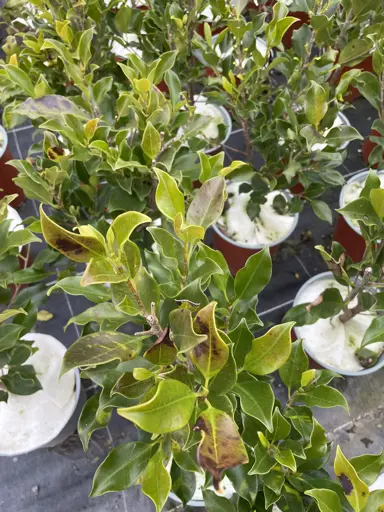
If the new growth on your Ficus Tuffi has been killed or damaged by frost, prune the plant back to healthy wood above a bud after the risk of frost has passed. If a plant has been aggressively pruned in a cold climate and an unseasonal frost is forecast, frost cloth or a blanket may be used to afford protection. It is important not to cut off the frosted growth until the risk has passed as this growth, albeit ugly, is helping to shield the plant from further damage.
New shoots tend to be more prone to frost damage than older ones. For this reason, The Plant Company does not recommend applying fertiliser of any kind to plants between mid-autumn and late-winter as this can create softer shoots when the buds open.
Propagating Ficus Tuffi is a relatively straightforward process when you have the right advice. They are easily rooted, and our articles give you the best chance of doing this successfully and efficiently.
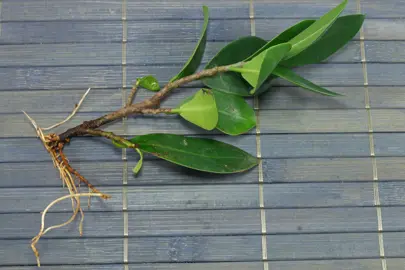
Ficus Tuffi are easily propagated from stem cuttings. Semi-hardwood cuttings are usually taken from autumn until mid-spring. A stem about 8-10 cm long is trimmed into a cutting using secateurs with 2-3 leaves at the top and just below a node. The cutting is dipped in rooting hormone for 5-10 seconds and then inserted into propagation growing media. The tray of cuttings is placed under mist with bottom heat also applied. The cuttings will have taken root inside of four weeks as a general rule.

Ficus Tuffi can be rooted in water from stem cuttings. Semi-hardwood cuttings are usually taken from autumn until mid-spring. A stem about 8-10 cm long is trimmed into a cutting using secateurs with 2-3 leaves at the top and just below a node. The cutting is placed in a cup of fresh water in a warm placed out of direct sun, and the water is changed every 2-3 days until the cutting has rooted. The cuttings will have taken root inside of four weeks as a general rule. However, please note that the chances of success are generally about 30% with this method when compared to using bottom heat and mist.
Ficus Tuffi owe their popularity to not just their aesthetics, but also to their versatility. They are commonly planted as formal and informal hedges, or used as backdrops for smaller plants. They are well suited to planting around living areas, pool, and barbecue areas where they provide a fresh appeal. The lush foliage is fantastic for providing a hint of the tropics and adding both depth and texture to a planting. They can be included in most garden styles with ease and make for an exciting addition. Explore our Ficus Tuffi to find the size that will suit your design needs!
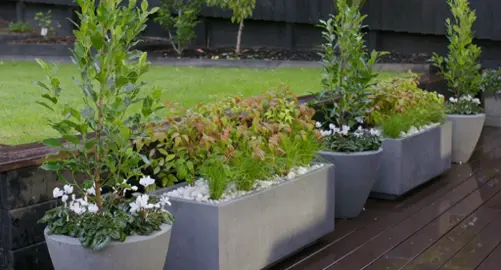
A wide range of plants can be grown with Ficus Tuffi. When used for hedging The Plant Company often recommends using grasses or dwarf flaxes to bring in different colours and textures, and avoid what would otherwise be a green wall. Some popular flax options include Jack Spratt, Yellow Wave, and Dark Delight, while grass options include Feather Falls, Carex testacea, and Frosted Curls.
Trailing plants such as Lysimachia, Dichondra, or Cerastium are often used for Ficus Tuffi grown in a pot. They bring colour and a complementary style, though the colour of the pot is often the determining factor for which plant is chosen. Where Ficus Tuffy are included in a mixed planting, we will still use the aforementioned plants but now mix it up with other NZ natives such as Hebes, Flowering Manukas, Pseudopanax, and Coprosmas.
The good thing about Ficus Tuffy is that they are versatile and blend easily with most plant colours and textures in a subtle and non-overpowering manner. A key consideration with any of these pairings, however, is how big you will let the Ficus Tuffy grow to. A big shrub can quickly dwarf the plants around it and start to suffocate them. Therefore, The Plant Company suggests first determining the ultimate size you want the Ficus Tuffi, then make plant choices that keep the proportions appropriate for the intended use.
Planting Ficus Tuffy and getting them to grow well is generally easy when you get a few of the basics right. This involves planting them in the right soil type, choosing the most ideal planting position, selecting the correct size, and ensuring the plants have the essentials to thrive. The Plant Company has the right advice to ensure success when you are growing a Ficus Tuffi.
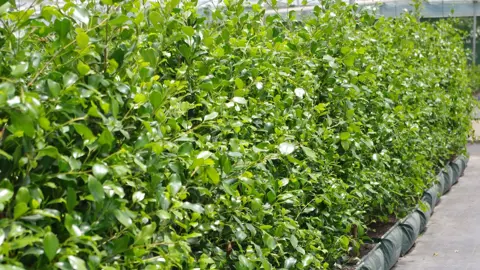
Ficus Tuffi are very easy to grow, but you need to have the basics right. Choose a sunny spot with good drainage. The soil should be well prepared with organic matter added from either compost or sheep pellets mixed in. Feeding your plants in spring with shrub fertiliser will replenish nutrients and keep them fed for 12 months. Prune your Ficus Tuffy in winter each year with secateurs to control their growth and encourage fresh growth in spring. They should also be watered regularly during dry periods to keep them flourishing.

Ficus Tuffi are well suited to coastal areas as their leaves are covered with wax which helps protect them from the elements. This allows them to tolerate wind and some sea spray. However, being constantly coated with sea spray can result in leaf burning. If the soil is too saline, this can prove detrimental to plants and can result in the plants being stunted. If you elect to plant in this environment, The Plant Company recommends ensuring the soil is well prepared with organic matter such as compost and provide some shelter with regular watering during dry periods.

The answer to this question depends on how much shade. As shade levels increase, Ficus Tuffi tend to become “leggy” and more open in their growth habit. In full sun they tend to be much more compact in their growth. So yes, they will grow in partial shaded conditions such as down the side of a house or under dappled light from a tree, but growth is likely to be less than if they were growing in better light. Please note that in partially shaded environments the central leaves on the plant will often yellow and fall which can result in a plant that has mostly exterior foliage only.
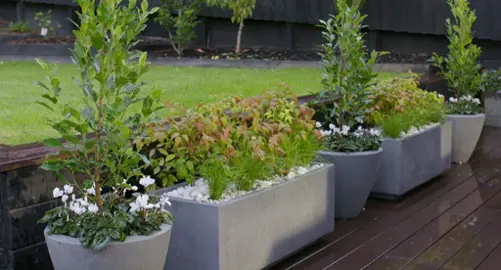
Absolutely, and they look amazing when managed appropriately. Choose a pot that is no more than twice the size of what the Ficus Tuffi is currently growing in and that has plenty of drainage holes in the bottom. Fill the bottom of the pot to about 1/3 of the way up with potting mix. Do not use soil or compost when growing plants in a container and do not add fertiliser. The Plant Company potting mix has all the nutrients required to sustain the plant for the next 12 months.
Remove the plant from the container it is growing in by either pulling it free or by cutting the bag. We recommend cutting the bag or container, especially for larger grade plants, to minimise any chance of damaging the roots. If the roots have been growing in a circle or are all bound up you can tease them apart if you want but this is not essential. Similarly, you don’t need to remove any of the growing media. The Plant Company does not recommend cutting the roots, even if the plant is root-bound as this offers no benefit. This is explained in our article, Managing Rootbound Plants. Add more potting mix and firm this around the plant using gentle pressure, then water well. They should be watered twice a week during hot weather and weekly or fortnightly during cooler periods.
The key to having an amazing Ficus Tuffi in a pot is to keep trimming it to keep it shapely, contained, and dense. Typically, the plants would be lightly clipped every 2-3 months.

Choose a full sun position with good drainage and moderate shelter for your Ficus Tuffi plant. The hole should be dug to at least 50-75% deeper and wider than the container the plant is currently growing in. The Plant Company recommends incorporating compost or sheep pellets into the soil to provide additional organic material, but this is not essential. Do not put fertiliser in the bottom of the hole, rather spread shrub fertiliser on the soil surface after planting, and preferably do this when the plant is actively growing in spring.
There are specific articles to help you grow amazing Ficus Tuffi:
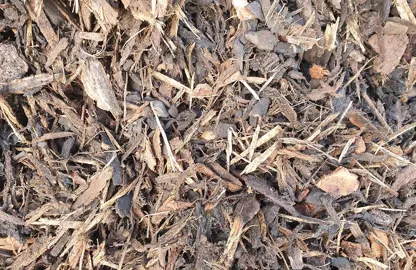
Placing mulch around Ficus Tuffi helps keep the soil moist and significantly reduces weeds. The Plant Company recommends an organic mulch is used as this breaks down over time to provide nutrients and improves the soil. It is also better for the environment than the plastic-based alternatives. Whatever type of mulch is used, it needs to be free draining so the soil can “breathe” and allow water to penetrate quickly and easily. Heavy rates of lawn clippings are therefore not a good option as they hold too much moisture. The Plant Company has three very good options for mulch. The first is coco fibre matting which is made from the husks of coconuts. The second is Earth Mat which is made from recycled paper. Both break down to become part of the soil within two years. The third is black plastic matting which will last 20 years or more. Whichever mulch is used, The Plant Company recommend stones, bark chip, or other similar products be spread over top for aesthetic purposes.
Compost is not considered an effective mulch as weeds germinate easily and it is only short lasting. It is, however, a very good method of adding organic matter to the soil and should be applied before the mulch is put down.
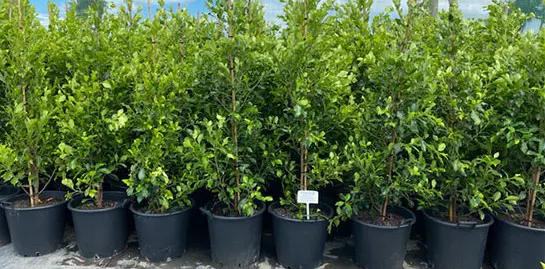
Choose a full sun position with good drainage for your Ficus Tuffi. The hole should be dug to at least 50-75% deeper and wider than the container the plant is currently growing in. A planting spade makes the hole digging a lot easier. The Plant Company recommends incorporating compost or sheep pellets into the soil to provide additional organic material, but this is not essential. Do not put fertiliser in the bottom of the hole, rather spread that on the soil surface after planting, and preferably do this when the plant is actively growing in spring.
Remove the plant from the container it is growing in by either pulling it free or by cutting the bag. We recommend cutting the bag or container, especially for larger grade plants, to minimise any chance of damaging the roots. If the roots have been growing in a circle or are all bound up you can tease them apart if you want but this is not essential. Similarly, you don’t need to remove any of the growing media. The Plant Company does not recommend cutting the roots, even if the plant is root-bound as this offers no benefit. This is explained in our article, Managing Rootbound Plants.
Now place the plant in the hole and make sure it is level with the soil surface before filling in around it. If it is above the soil surface, dig more out. If it is below, put in more soil and retest the level. Once the plant is set level with the soil surface, add more soil gradually and firm it around the plant using gentle pressure as you go. Scatter shrub fertiliser across the soil surface after planting and the give the plant a good watering.
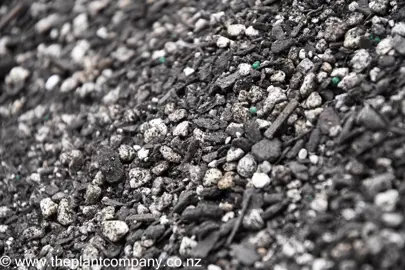
Only potting mix should be used when plants are grown in a container. Often people will try and cut corners and use soil or mixes that contain both soil and potting mix with poor results. The same applies to when plants are potted up with compost as it holds too much moisture. Soil also contains weeds and tends to become compacted in a container, hence why it is not used in this manner. The Plant Company has nursery grade potting media which is pre-loaded with the correct amounts of fertiliser and micro-nutrients to keep the plant sustained with nutrition and actively growing for the next 12-months. After 12-months, simply add a couple fertiliser tablets to keep the plant fed for the next 12-months.
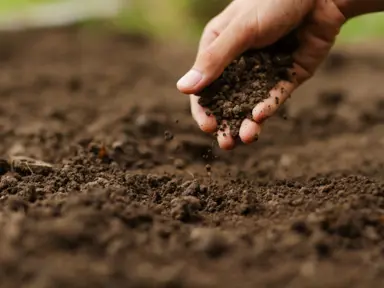
Soils rich in fertility and organic matter that are well-drained will produce amazing plants. The soil should be well prepared with either compost or sheep pellets mixed in at planting or spread on the soil surface after planting. It is important that the soil being planted into won’t restrict root growth and for this reason, clay soils are generally not well suited to Ficus Tuffi. Clay soils also tend to be very wet which will negatively impact the performance of the plant.
Feeding your Ficus Tuffy plants in spring with shrub fertiliser will replenish nutrients and keep them fed for 12 months. Liberal amounts of organic fertiliser can also be used. Ensure plants are watered regularly during dry periods to keep them flourishing.
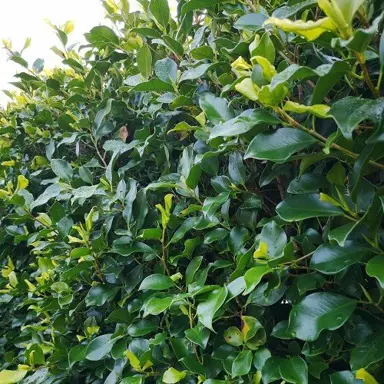
Ficus Tuffi are best planted from mid-autumn until late spring. During this time, they can cope with the stresses associated with planting (root damage mainly) more easily than if they have to also cope with heat and moisture stress as well. They can be planted in summer provided they are well-watered and the roots have plenty of growing media attached when planted. If watering is a challenge, The Plant Company advises planting from late-autumn through until early-spring. Make sure you have a good planting spade to make this job a lot easier.

A full sun or partial shade position with good drainage is essential for getting the best results with Ficus Tuffi. On poorly drained sites or with over-watering they tend to become stunted and sickly looking. This can cause and result in root rot issues that may eventually kill the plant if drainage is very poor. If you think this might be a problem for you, please refer to the article, Ficus Tuffi Issues And Troubleshooting.
As shade levels increase, Ficus Tuffi tend to become “leggy” and more open in its growth habit. In full sun they tend to be more compact and denser which is particularly important if you are considering a hedge. The shaded option is more for standalone plants where density is less important. The position should also be moderately sheltered so fresh growth is not damaged by wind and this will help produce a better shaped plant overall. This is not essential as they can cope with moderate wind. Wherever they are grown, make sure they have plenty of room to expand!
Growing Ficus Tuffi takes some thought and planning to ensure you get what you are after. The Plant Company have produced this series of articles to provide advice for trimming Ficus Tuffi so you can manicure your plants with confidence and success.

Ficus Tuffi will generally sprout new shoots when cut right back, even to stumps at ground level. However, this relies on the plant having heathy stems at the outset. If the stumps have any dead wood or they are too old (more than five years), they may not shoot or may only shoot on one side. Similarly, stumps that still have actively growing foliage may not sprout unless all the foliage connected to that stem is completely removed.
Severe pruning using a pruning saw is best undertaken any time from late autumn until early spring. Multiple shoots will usually grow from each stump. Please note: Ficus Tuffi grown in heavy shade environments may struggle to re-establish when cut back severely. This operation is best undertaken in late spring.

Creating a Ficus Tuffi topiary standard requires both patience and a straight, single-stemmed plant to start off with. The plant is staked to grow with a straight trunk to just past the mid-height of the topiary (i.e., ball). All the side branches are trimmed off to about 10 cm above the mid-point of the topiary. The top of the plant is cut off just above the mid-point of the ball to encourage sprouting just below the cut. As the new stems grow, they are routinely “tipped” (i.e., the top bud is pinched out) to encourage more shoots. All the time, the ball is progressively shaped until the desired size is achieved. This process can take two years (or more) to complete. If all this seems too hard or you don’t have the patience, contact us and we can generally supply your needs.
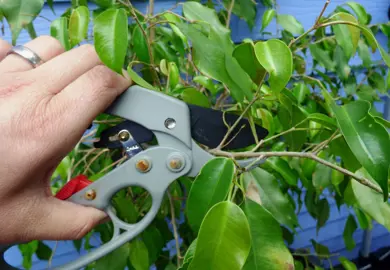
Ficus Tuffi are trimmed each winter to contain growth and encourage fresh, new growth. The Plant Company recommends they are lightly trimmed each year to the size you are after and allowing for 50 cm of extension growth. You can be as aggressive as you want as the plants will sprout new buds from healthy stumps. Any dead stems should also be removed at this time, along with stems that show disease.
A mistake often made is to not prune the plants hard enough. This error generally results in a woodier plant and a much larger plant that can be difficult to contain. Ficus Tuffi are very forgiving plants and even if you get the trimming wrong, they will recover!
The article, How To Grow A Ficus Tuffi Hedge provides great advice if this is the intended use.
Whether you need assistance finding the plant you’re looking for or you simply want to know more about who we are and what we do, we invite you to get in touch with us today. A member of The Plant Company team will get back in touch as soon as possible.

